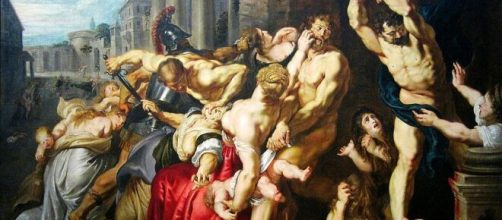As a longtime fan of old movies, I should not have missed this, but NPR spotted a prediction of NYC’s future in the 1973 film “Soylent Green,” and the future is now. Each scene paints a picture of the city in 2022 so grim that it comes off as preposterous.
In the news
But with daily news about Omicron raging in Manhattan jamming hospitals to the brink, and with anticipated food shortages, along with degradation of potable water and breathable air due to climate change, “Soylent Green” turns out to be a soothsayer.
In this polluted, overcrowded metropolis short on food and water, you see a large corporate body doling out food said to be plankton from the sea.
(More about that in a moment).
While the movie is alarming, it unsettles you more because Edward G. Robinson is out of character. Known for bad guy roles like mob boss Johnny Rocco in the ’48 film “Key Largo” mercilessly taunts his alcoholic moll, in "Soylent Green" he is the antithesis of the bad guy.
In this movie, Robinson plays a moony, misty-eyed old man pining for the good old days when pastures were green and air and water were clean.
Probably, the most heartbreaking scene in this otherwise hard-nosed movie is when Robinson lay dying watching old video clips of Earth before the ecological disaster when Mother Nature thrived.
And just as Robinson’s role-reversal intensifies the story, so does the out-of-character part Charlton Heston plays.
Famed for his role as Moses leading his people to freedom, here, he is hexed and hapless.
Identity crisis
These two role-reversals are so upending to see that it’s a little like seeing, say, Betty White takes on the role of Lizzie Borden, who was said t murder her father and step-mother with an ax.
As for the ingredient of Soylent Green (hint, it’s not plankton), you may guess the food for impoverished people to be the meal that impoverished miners in Belgium eat in Van Gogh’s "Potato Eaters."
When you finally find out at the end of the movie that Soylent Green feeding a starving city is made of ground-up dead people, you feel like throwing up.
But here’s the thing. While "Soylent Green" hits you hard, the horror of the food source is merely alluded to. But some Old Master-art makes the case that movies don’t have a patent on gruesome.
Consider Francisco Goya’s out-and-out view of cannibalism "Saturn Devouring His Son." Granted, Saturn was a mythological god who ate his newborns out of fear one would take his place.
But the depiction is realistic enough to repulse.
And the way Francis Bacon’s "Figure with Meat" comes across, the figure could be the CEO of that large corporate body doling out "Soylent Green" (except, in this case, the meat is the carcass of a bisected cow).
Worst of the worst
Likely the most off-putting painting I can think of is Theodore Gericault’s "Anatomical Pieces," which he rendered from human remains from a local morgue.
Another horror is "The Massacre of the Innocents" by Peter Paul Rubens. It’s a scene from the Bible when King Herod orders all males under two years old killed. What Rubens describes is a scene of wholesale slaughter.
But wait. While these paintings are insistently real-looking and hide nothing, "Soylent Green," though novelized, is awfully close to the reality of our times. Too close.


